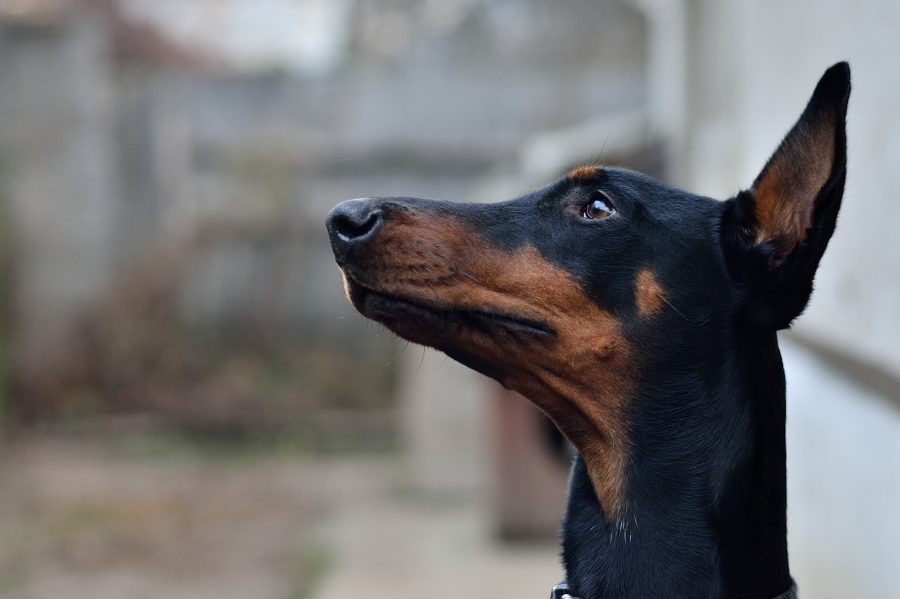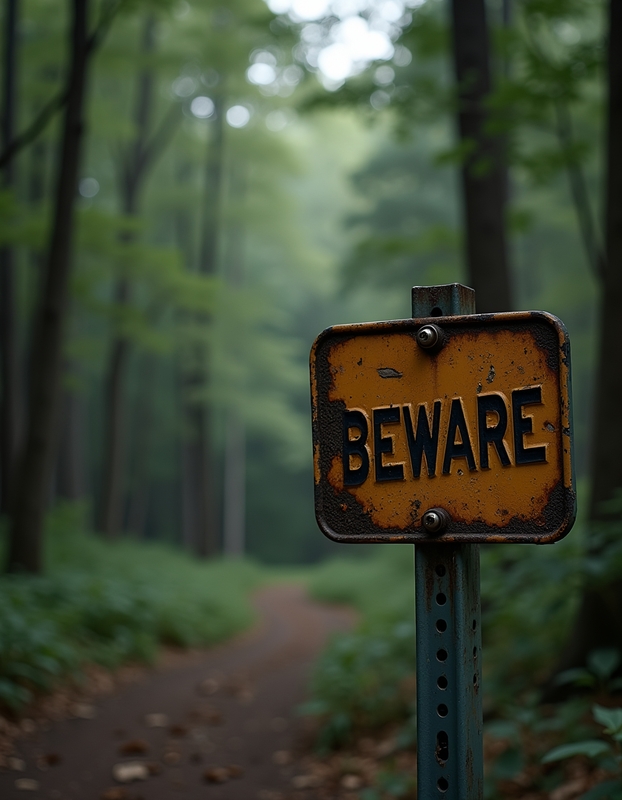
We read a fair amount of old, new, and in between dog books in these parts, and when we came across the term, “wet neck,” we looked it up in a canine encyclopedia to make sure it was what we thought it was.
The definition read:
Wet neck: Opposite of dry neck.
Noting the authors’ gift for the obvious, we flipped back a few pages to look up the term, “dry neck,” in the same book. The definition read:
Dry neck: See Clean neck
We flipped back a few more pages to find “clean neck.” The definition read:
Clean neck: Dry neck.
We promise, we did not make this up. Our reference source was Canine Lexicon by Andrew De Prisco & James B. Johnson, and had the authors not given us a bit more, we might have chucked the book into a circular file right then and there. Mercifully, De Prisco and Johnson did add: “Neck that is tightly skinned and free of loose skin, dewlap or wrinkles, e.g. Sloughi. Curious, we looked up the Sloughi’s AKC breed standard. It reads, “The neck is long and springs well up from the shoulders. It is slightly arched at the crest. Its length is similar to that of the head. It should be elegant and powerful. The skin is fine, tight, with no dewlap and the hair is very smooth.”
No mention of a “clean” or “dry neck.”
We wondered. Are the terms, “clean,” “dry,” or “wet” used to describe a neck in any AKC breed standard?
Certain that they are, we still wanted proof because you just never know when you’re going to be asked at gunpoint to name all the breeds that have clean, dry, or wet necks. You can’t be too prepared.
And so that you, dear readers, are also protected from a lack of knowledge, we share our findings. But first….

Photo by ©Gijs Van Den Abeele | Dreamstime
What follows is “dog nerd” territory. If you are such a creature, you won’t hate it.
We start with the caveat that while we were looking for these terms as they applied to necks, we weren’t certain if the authors of the different breed standards considered the neck and throat to be the same thing. In the end, we used the same source book (now with a bit of trepidation) to decide. It read, “Neck: Anatomical region between the head and shoulder area; connecting the head with the body. The cervical region of the body.”
As you read our findings, be aware that we are sharing language from standards that use the terms in connection to the neck and throat (and not the body, head, movement, or other attributes in which the word, “clean” in particular can be found).
When it comes to “dry” necks
In the Herding Group, only one standard, the Mudi’s, used the word. “dry:” The skin at the throat is tight, dry, and without a dewlap.
No herding breed standard, however, included the word “wet” with regards to the neck/throat, though “clean” necks/throats appeared in five standards: They belonged to the German Shepherd Dog, Berger Picard, Entlebucher Mountain Dog, Collie, and Pembroke Welsh Corgi.
Moving on to the Hound Group, only the Portuguese Podengo Pequeno called for a dry neck: Very dry without dewlaps.
No breed called for a “wet neck,” but we hit paydirt with ten breeds mentioning “clean.” Behold:
- Treeing Walker Coonhound – Neck and Throat – clean with no excess of skin, neck of medium length, rising from the shoulders cleanly
- From the Dachshund standard: Neck: Long, muscular, clean-cut, without dewlap
- Bluetick Coonhound- Throat clean with only a slight trace of dewlap
- Redbone Coonhound – Throat – Slight fold of skin below the angle of jaw, clean throat is permissible
- Beagle – The throat clean and free from folds of skin
- American Foxhound – The throat clean and free from folds of skin
- Cirneco Dell’Etna – Neck – Length the same as the head. Strong, clean, well arched and muscular
- Plott – Neck – Medium length and muscular. Clean and free of ponderous dewlap
- English Foxhound – Neck: Must be long and clean
- Whippet – Neck long, clean and muscular
- Scottish Deerhound – The nape of the neck should be very prominent where the head is set on, and the throat clean cut at the angle and prominent
- Dutch Shepherd: Neck – is not too short, dry, without folds and gradually flowing into the body
- Russian Tsvetnaya Bolonka – The neck is average length, sloping, dry, and well-muscled
- Norrbottenspets – The neck is moderately long in proportion to the body, dry and muscular
“Clean” had but one breed, the Teddy Roosevelt Terrier: The neck is clean, moderately long, slightly arched.
We move over to the Non-Sporting Group where only the Xoloitzcuintli mentions a dry neck (in adults, the skin on the neck is smooth and dry, without wrinkles, but neither “wet” nor “clean”show up in any NS standard.
In the Sporting Group, we have only one “dry necked” breed, the Pointer: From its standard: “…neck that is “long, dry, muscular, and slightly arched.”
Five Sporting breeds do use the word “clean:”
- English Cocker Spaniel – Neck-Graceful and muscular, arched toward the head and blending cleanly, without throatiness…
- The Irish Setter is trimmed for the show ring to emphasize the lean head and clean neck
- Field Spaniel – Neck-Long, strong, muscular, slightly arched, clean…
- Weimaraner- Neck clean-cut and moderately long
- Welsh Springer Spaniel – The neck is long and slightly arched, clean in throat
As of this writing, no Sporting breed a mentions “wet.”
In the Terrier Group, “dry”and “clean” are particularly important in several breeds. Why? Remember that the original job of many of these breeds was to go to ground, shimmy into tunnels, and follow prey into burrows. A clean/dry neck improves the dog’s range of motion and mobility, enables it to better sense its surroundings, minimizes the chances of getting caught on tree roots and vegetation, helps regulate its body temperature, and allows its handler to check their dog for cuts, ticks, or injuries incurred in the line of duty. No surprise, then, that no breed includes “wet” in describing the neck/throat. The breeds that do mention clean/dry?
- Rat Terrier – Strong, arched along the crest and dry
- Parson Russell Terrier – Neck: Clean and muscular, moderately arched
- Kerry Blue Terrier – Neck: Clean and moderately long
- Russell Terrier – A clean, strong neck tapering gradually into the withers
- Staffordshire Bull Terrier – The neck is muscular, rather short, clean in outline…
- Smooth Fox Terrier – Neck should be clean and muscular, without throatiness
- Soft Coated Wheaten Terrier – Neck medium in length, clean and strong, not throaty
- American Hairless Terrier – The neck is clean
- Bull Terrier – Neck: Should be very muscular, long, arched and clean
- Welsh Terrier – The throat is clean with no excess of skin
- Wire Fox Terrier – Neck should be clean, muscular, of fair length
- Border Terrier – Neck clean, muscular and only long enough to give a well-balanced appearance
- Lakeland Terrier – The neck is long; refined but strong; clean at the throat
Onto the Toy Group:
No breed mentions “dry” or “wet,” and only two breeds use “clean:”
- Chinese Crested – Neck is lean and clean
- Toy Fox Terrier – The neck is carried proudly erect, well set on, slightly arched, gracefully curved, clean, muscular and free from throatiness.
In the Working Group, no breed mentions “wet,” but “clean” and “dry” appear in several:
- Doberman Pinscher – Neck proudly carried, well muscled and dry
- Mastiff – Neck moderately “dry” (not showing an excess of loose skin)
- German Pinscher – Neck: The skin is tight, closely fitting to the dry throat without wrinkles
- Standard Schnauzer – The skin is tight, fitting closely to the dry throat with no wrinkles or dewlaps
- Boxer – Neck – Round, of ample length, muscular and clean without excessive hanging skin (dewlap)
- Greater Swiss Mountain Dog – The neck is of moderate length, strong, muscular and clean
- Great Dane – The neck underline should be clean
By now you might be wondering why the fuss over semantics, and we can explain. When fanciers sit down to form or revise their breed standard, each word is chosen carefully, and then almost painfully, considered, examined, dissected, and reviewed before making the “final cut” in a document that is a blueprint for a breed for generations.
Each. Word.
